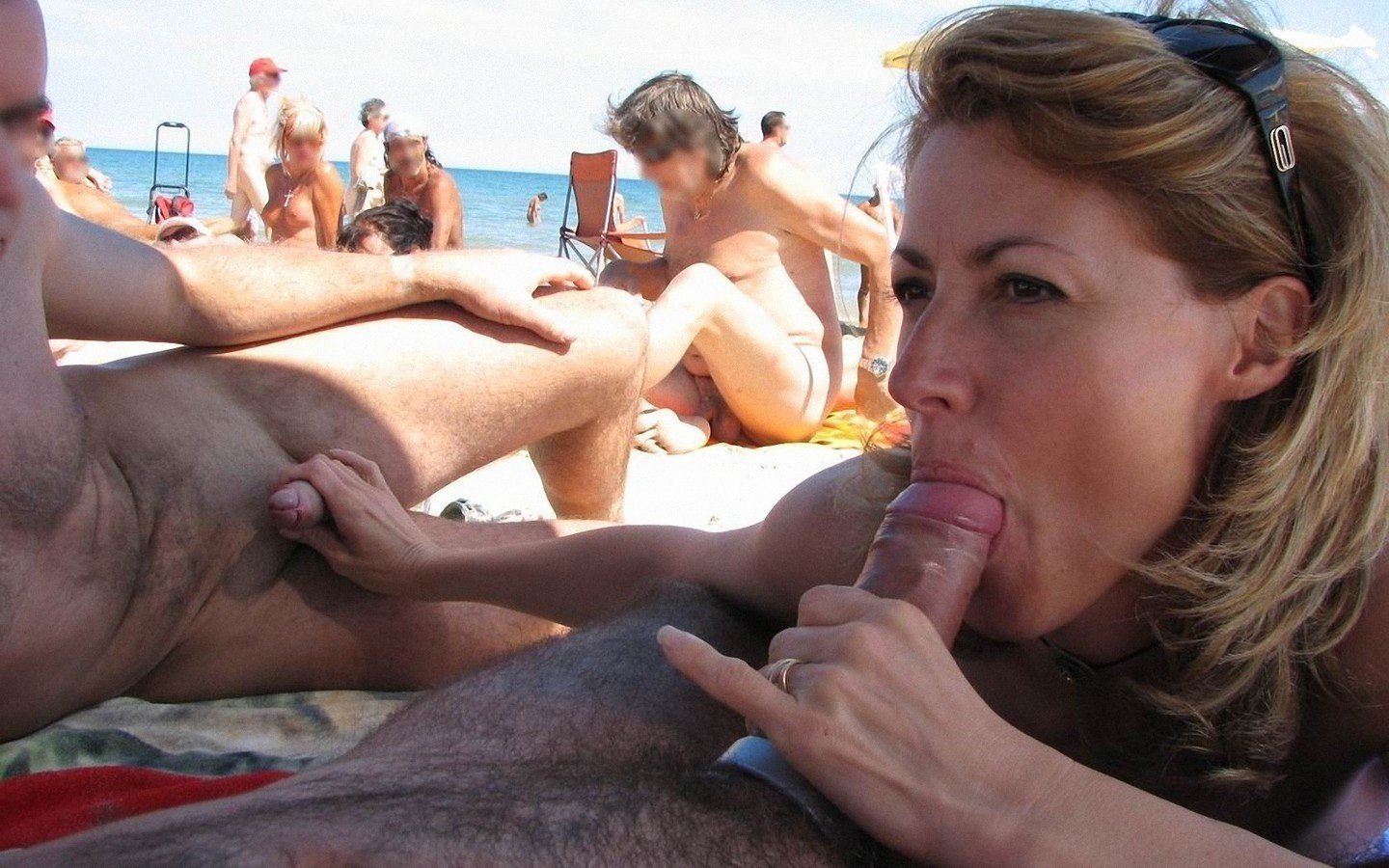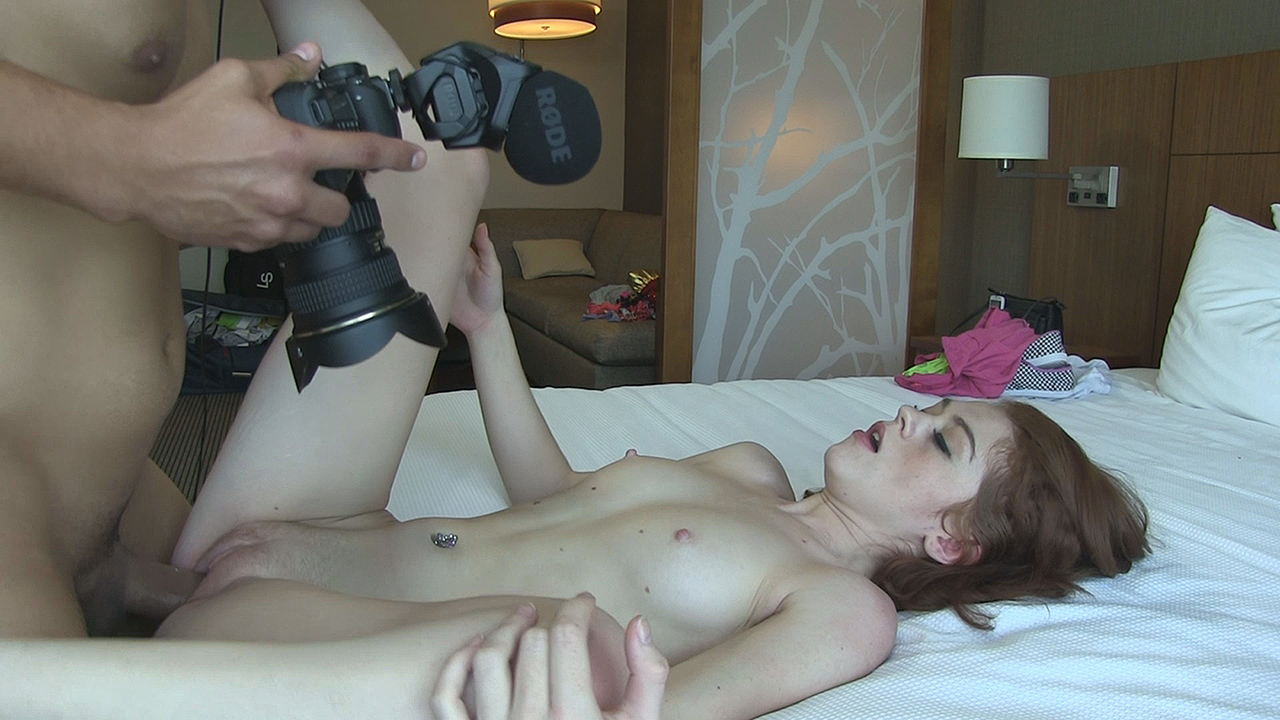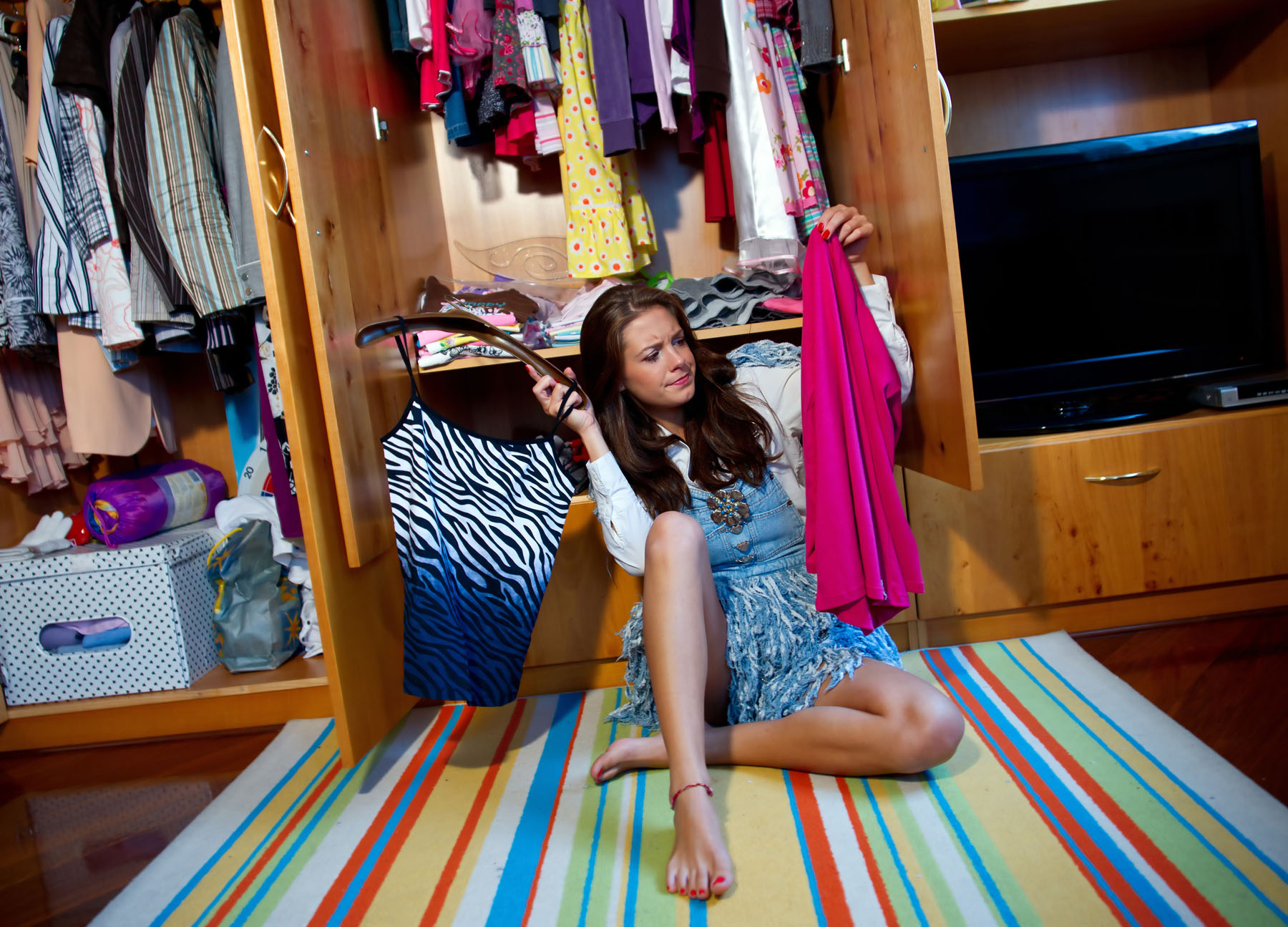How to Film Amateur Porn

If you’re interested in filming amateur porn, follow these step-by-step guidelines to ensure a safe, consensual, and high-quality filming experience.
1. Plan and Prepare
Before filming, it’s important to plan and prepare to ensure a successful shoot:
- Discuss Boundaries and Consent: Communicate openly with your partner(s) about boundaries, desires, and consent. Establish clear guidelines and ensure everyone involved is comfortable with the planned activities.
- Choose a Safe and Comfortable Location: Select a location that provides privacy and a comfortable atmosphere for all participants. Consider factors like lighting, noise control, and accessibility.
- Prepare the Scene: Clean and declutter the filming area. Set up any props or equipment needed for the scene.
2. Essential Equipment
Gather the necessary equipment to ensure a high-quality filming:
- Camera: Use a high-definition camera capable of capturing clear and sharp footage. A DSLR camera or a dedicated video camera can provide excellent results. Set the camera to the appropriate settings, such as manual mode, to have more control over the final output.
- Lighting: Ensure proper lighting to enhance the visibility and quality of the footage. Use soft, diffused lighting to avoid harsh shadows and create a flattering and inviting atmosphere. Consider using professional lighting kits or natural light sources strategically to achieve the desired effect.
- Audio: Good audio quality is crucial for an immersive experience. Consider using an external microphone or a lavalier mic to capture clear and synchronized audio. Test the audio equipment beforehand to ensure optimal sound recording.
- Tripod or Stabilization: Use a tripod or stabilization equipment to keep the camera steady and reduce shaky footage. This will help maintain a professional and polished look to the final video.
- Props and Wardrobe: Prepare any props or wardrobe items required for the scene. Ensure they are clean, in good condition, and appropriate for the desired aesthetic or theme of the video.
3. Consensual and Ethical Filming
When filming amateur porn, it’s essential to prioritize consent, respect, and ethical practices:
- Obtain Consent: Ensure that all participants give informed and enthusiastic consent throughout the filming process. Establish a safe word or signal to indicate discomfort or the need to pause or stop. Consistently check in with everyone involved to ensure their comfort and consent throughout the shoot.
- Respect Privacy: Discuss and agree upon any privacy concerns or limitations. Be mindful of personal information, such as faces, identifiable tattoos, or backgrounds that may compromise anonymity. Consider using techniques like camera angles, close-ups, or creative framing to focus on specific body parts or maintain privacy if desired. Additionally, discuss any preferences regarding post-production editing and ensure that everyone involved is comfortable with the final product before sharing or distributing it.
- Focus on Realism and Authenticity: Capture genuine and consensual interactions between performers. Encourage natural expressions of pleasure and avoid excessive scripting or staged scenarios. Allow room for improvisation and spontaneous moments to enhance the authenticity and connection portrayed in the video.
- Respect Boundaries: Continuously communicate and respect the boundaries of all participants. Prioritize their comfort and well-being throughout the filming process. Be open to feedback and make adjustments as necessary to ensure a positive and consensual experience for everyone involved.
4. Post-Production and Privacy
After filming, take steps to ensure privacy and protect the content:
- Secure Storage: Store the footage securely on encrypted drives or password-protected devices to prevent unauthorized access. Consider using backup systems or cloud storage services to minimize the risk of data loss.
- Consent for Sharing: Obtain explicit consent from all participants before sharing the content. Respect their privacy and preferences regarding distribution and online presence. Ensure that any sharing is done securely and only with the consent of all parties involved.
- Edit with Care: If you choose to edit the footage, do so responsibly. Respect the boundaries and preferences of all participants, and avoid altering the content in a way that compromises consent or authenticity. Use video editing software to enhance the visual and audio quality, remove any unwanted elements, and create a polished final product.
- Watermark and Copyright: Consider watermarking the final video with a logo or identifier to deter unauthorized sharing or distribution. Familiarize yourself with copyright laws and ensure you have the necessary permissions for any third-party content used in the video.
5. Prioritize Safety and Well-being
Throughout the filming process, prioritize safety, well-being, and ethical considerations:
-
- Practice Safer Sex: Follow safe sex practices, including the use of condoms and regular STI testing. Prioritize the health and well-being of all participants. Consider discussing and implementing protocols for consent, safe words, and regular communication during sexual acts.
- Consent and Boundaries: Continuously check in with all participants to ensure their comfort and consent. Respect their boundaries and adjust the scene if needed. Encourage open and ongoing communication to maintain a safe and consensual environment throughout the filming process.
- Post-Shoot Support: Offer emotional support and debriefing after the shoot, allowing participants to share any concerns or feelings that may have arisen during the process. Create a safe space for discussions, ensuring that all participants feel heard and validated.
Boundaries and Consent in Filming Amateur Porn
When engaging in the filming of amateur porn, respecting boundaries and obtaining ongoing consent are crucial to creating a safe and consensual environment for all participants. Clear communication and understanding ensure that everyone involved feels comfortable and empowered throughout the process.
Understanding Boundaries
Boundaries refer to the limits and preferences of each participant involved in the filming. It is essential to discuss and establish boundaries beforehand to ensure that everyone’s comfort levels and boundaries are respected. Here are some key aspects to consider:
- Physical Boundaries: Discuss what physical activities are acceptable and enjoyable for each participant. Communicate any specific acts, positions, or scenarios that may be off-limits or uncomfortable.
- Emotional Boundaries: Recognize that participants may have emotional boundaries and triggers related to certain activities or scenarios. Create an open and non-judgmental space for individuals to express their emotional needs and set boundaries accordingly.
- Privacy Boundaries: Address any concerns regarding privacy, such as the use of masks, blurring of faces, or concealing identifiable features. Respect individuals’ desires to maintain anonymity and protect their personal lives.
- Content Distribution Boundaries: Discuss how the final content will be shared, distributed, and accessed. Obtain consent for specific platforms or channels where the content will be made available and respect participants’ preferences for privacy and control over the dissemination of the content.
The Importance of Ongoing Consent
Consent is a continuous and ongoing process throughout the filming experience. It involves open communication, active participation, and the ability for participants to freely express their desires and boundaries. Here’s what to keep in mind:
- Clear Communication: Encourage participants to openly express their consent or lack thereof for specific acts, scenes, or moments during filming. Maintain an environment where individuals feel comfortable communicating their desires, concerns, or discomfort.
- Establishing Boundaries: Continuously check in with each participant to ensure that their established boundaries are being respected and that they feel safe and comfortable. Be responsive to any changes in boundaries or limits throughout the filming process.
- Safe Words or Signals: Implement a safe word or signal that allows participants to communicate the need to pause or stop the filming if they are experiencing discomfort, fatigue, or any other issues that may arise. Ensure that all participants understand and recognize the safe word or signal.
- Consent for Touch: Obtain explicit consent for any physical contact or interaction between participants, including intimate acts. Regularly check in to ensure ongoing consent and make adjustments accordingly.
- Respecting Withdrawn Consent: If a participant withdraws consent for a particular activity or scene, immediately stop and respect their decision. Make any necessary adjustments to accommodate their boundaries and ensure their comfort and well-being.
- Non-Verbal Cues: Pay attention to non-verbal cues and body language that may indicate discomfort or a change in consent. Encourage participants to communicate their feelings through non-verbal cues, and be attentive and responsive to their signals.
- Encouraging Empowerment: Foster an environment that promotes empowerment and agency for all participants. Encourage individuals to express their desires, voice their boundaries, and actively participate in decision-making throughout the filming process.
- Respecting Revoked Consent: If at any point during filming, a participant revokes their consent or expresses discomfort, immediately stop and address their concerns. Prioritize the emotional and physical well-being of all involved, even if it means discontinuing or modifying the scene or activity.
Remember, consent is an ongoing and enthusiastic agreement between all participants involved. It should be voluntary, informed, and freely given without coercion or pressure. Respect and honor the boundaries and consent of each individual to create a safe and consensual environment when filming amateur porn.
Choosing a Safe and Comfortable Location for Filming Amateur Porn
When planning to film amateur porn, selecting a safe and comfortable location is crucial to creating a conducive environment for a successful and enjoyable filming experience. Consider the following factors to ensure the chosen location meets your needs:
1. Privacy
Privacy is essential to maintain the confidentiality and intimacy of the filming. Consider the following:
- Avoid Public Spaces: Choose a location where you can film without the risk of unwanted interruptions or exposure to others. Opt for private settings, such as a closed room, a rented studio, or a secluded outdoor area.
- Consider Noise Control: Ensure that the chosen location offers sufficient noise isolation to minimize the risk of external sounds or distractions that may disrupt the filming. If filming in a residential area, inform neighbors or take measures to reduce noise levels.
- Background Check: Pay attention to the background of the filming location to avoid any sensitive or identifying information that could compromise privacy. Remove or conceal personal items or consider using a backdrop or set design to create a neutral and controlled environment.
2. Lighting
Proper lighting is crucial to capturing high-quality footage. Consider the following lighting aspects:
- Natural Light: If possible, utilize natural light sources, such as windows or skylights, to create a soft and flattering ambiance. Position the performers and camera in a way that utilizes natural light effectively.
- Artificial Lighting: If natural light is insufficient or not available, consider using artificial lighting equipment. Use soft, diffused lighting to avoid harsh shadows and create a visually appealing and inviting atmosphere. Experiment with different lighting setups to achieve the desired effect.
- Test Lighting: Before filming, test the lighting setup to ensure optimal visibility and quality of the footage. Adjust lighting angles, intensity, and color temperature as needed to enhance the overall look and mood of the scene.
3. Accessibility and Comfort
Choose a location that is accessible and comfortable for all participants involved:
- Physical Comfort: Consider the comfort of performers by providing suitable seating, cushions, or supportive props. Ensure that the filming area is clean and free from hazards to prevent accidents or discomfort.
- Temperature and Ventilation: Maintain a comfortable temperature in the filming location to prevent discomfort or distraction. Ensure proper ventilation to avoid stuffiness and promote a pleasant atmosphere.
- Accessibility: Ensure that the location is accessible to all participants, taking into account any mobility or logistical considerations. Choose a space that allows for easy movement, positioning, and flexibility during the filming process:
- Considerations for Equipment: Ensure that the chosen location has sufficient space and appropriate surfaces to accommodate the required equipment, such as cameras, lighting stands, tripods, and audio recording devices. Plan the layout of the filming area to allow for smooth and efficient filming without obstructions.
- Comfortable Changing Area: If wardrobe changes are necessary during the filming, designate a private and comfortable area where participants can change outfits and prepare for different scenes without discomfort or interruption.
- Safety Measures: Prioritize safety by identifying and addressing any potential hazards in the location. Remove or secure any objects that could cause accidents or injuries. Be aware of any potential risks, such as slippery surfaces, loose cables, or unstable furniture, and take appropriate precautions.
4. Additional Considerations
While choosing a safe and comfortable location, also keep in mind the following considerations:
- Legal Compliance: Ensure that the chosen location is legal and complies with local laws and regulations. Be aware of any restrictions or permits required for filming in certain areas, particularly public or commercial spaces.
- Discretion and Confidentiality: If confidentiality is a concern, choose a location where the filming activities are less likely to be observed or overheard by others. Consider using soundproofing techniques or selecting a time when there is minimal foot traffic or noise in the vicinity.
- Consent and Communication: Discuss the choice of location with all participants to ensure their comfort and address any concerns they may have. Encourage open communication and be receptive to feedback or alternative suggestions for the filming location.
By considering privacy, lighting, accessibility, comfort, and additional factors, you can choose a safe and comfortable location for filming amateur porn. Remember to respect the boundaries and preferences of all participants to create a positive and enjoyable filming experience.
Choosing the Best Camera and Lighting for Filming Amateur Porn
When filming amateur porn, selecting the right camera and lighting setup is crucial for capturing high-quality videos. Consider the following factors to make informed choices:
Choosing the Camera
When choosing a camera, consider the following aspects:
- Resolution and Image Quality: Opt for a camera with high resolution (preferably 1080p or 4K) to ensure crisp, detailed footage. Higher resolution allows for better image quality, particularly when zooming or post-processing the footage.
- Low Light Performance: Look for a camera with good low light performance, as it allows for better visibility in dimly lit or nighttime settings. Cameras with larger sensors and wider aperture lenses tend to perform better in low light conditions.
- Features and Settings: Consider the specific features and settings that meet your filming needs. Look for options like manual focus, manual exposure control, image stabilization, and adjustable frame rates to have more control over the final output.
- Compatibility and Accessories: Ensure that the camera is compatible with additional accessories such as external microphones, tripods, or lighting equipment that may enhance the filming experience. Check for the availability of mounting options and connectivity features.
- Budget: Consider your budget and find a camera that strikes a balance between affordability and desired features. Research and read reviews to find cameras that offer good value for money.
Wardrobe Ideas for Filming Amateur Porn
Choosing the right wardrobe items can greatly enhance the visual appeal and thematic elements of your amateur porn videos. Consider the following wardrobe ideas to create different looks and moods:
1. Lingerie and Underwear
Lingerie and underwear can add a touch of sensuality and intimacy to your scenes. Consider different styles, such as:
- Lace Sets: Delicate and intricate lace lingerie sets can create an elegant and romantic atmosphere.
- Bodysuits: Choose form-fitting bodysuits that accentuate the curves of the performers’ bodies.
- Teddy or Babydoll: Opt for teddies or babydoll lingerie for a playful and flirty vibe.
- Matching Sets: Coordinate matching bra and panty sets in various colors or patterns for a polished and cohesive look.
2. Role-play Costumes
Exploring role-play scenarios can add excitement and fantasy elements to your videos. Consider wardrobe items such as:
- Nurse or Doctor: Dress up in medical-themed outfits for scenarios involving role-playing as healthcare professionals.
- Police Officer: Incorporate police officer uniforms for scenes that involve authority figures or power dynamics.
- Teacher or Student: Create scenarios where one performer takes on the role of a teacher or professor and the other portrays a student.
- Fantasy Characters: Explore costumes inspired by fictional characters, such as superheroes, fairies, or mythical creatures.
3. Fetish and BDSM Attire
For those interested in exploring fetish or BDSM themes, consider wardrobe items that align with these preferences:
- Latex or Leather: Incorporate latex or leather outfits to emphasize a dominant or submissive role.
- Bondage Accessories: Use restraints, collars, or harnesses to enhance scenes that involve power exchange or restraint play.
- Corsets and Stockings: Opt for corsets and stockings to create a seductive and provocative aesthetic.
4. Casual or Everyday Wear
Sometimes, a casual or everyday wear can create a more relatable and intimate atmosphere in your videos. Consider options like:
- T-shirts and Tank Tops: Choose comfortable yet flattering tops that allow for movement and versatility.
- Jeans or Shorts: Incorporate denim bottoms for a casual and accessible look.
- Sundresses or Summer Outfits: Opt for sundresses or other summer outfits to create a carefree and playful vibe.
- Sweaters or Cardigans: Use cozy sweaters or cardigans for scenes that evoke a sense of intimacy or relaxation.
- Lingerie as Outerwear: Consider incorporating lingerie pieces as part of the outerwear ensemble for a sexy and daring look.
5. Accessories
In addition to clothing, accessories can complement and enhance the overall look. Consider these accessory ideas:
- Jewelry: Add statement pieces or delicate jewelry to accentuate specific body parts or create a glamorous touch.
- Stockings and Hosiery: Pair stockings, thigh-highs, or fishnet tights with various outfits to add a touch of seduction and sophistication.
- Props: Incorporate props like scarves, ties, hats, or masks to add intrigue and playfulness to your scenes.
- Shoes: Select footwear that complements the chosen wardrobe, such as heels, boots, or sneakers, depending on the desired aesthetic.
Remember to choose wardrobe items that align with the desired aesthetic, theme, and comfort levels of all participants involved. Communicate and obtain consent from everyone regarding their wardrobe preferences, ensuring that they feel empowered and comfortable in their chosen attire.
Ideas for an Amateur Porn Scenario

A well-crafted scenario forms the foundation of a compelling story. Here are some ideas to inspire your creative storytelling:1. Mystery and Intrigue
Set your scenario in a small, secluded town where a series of unexplained events occur. The protagonist, a curious and determined detective, must unravel the mystery and uncover the truth, encountering unexpected twists and turns along the way.
2. Science Fiction Adventure
Transport your scenario to a futuristic world where advanced technology coexists with societal struggles. Follow a group of rebels fighting against an oppressive regime, using their intellect and resourcefulness to challenge the status quo and bring about change.
3. Historical Drama
Set your scenario in a specific historical era, such as ancient Rome or Renaissance Europe. Explore the lives of intriguing characters, their personal struggles, and how they navigate the political and social complexities of their time, weaving a rich tapestry of drama and emotion.
4. Coming-of-Age Tale
Focus your scenario on the transformative journey of a young protagonist discovering their identity and purpose. Explore themes of self-discovery, friendship, and resilience as the main character navigates the challenges of adolescence and learns valuable life lessons.
5. Dystopian Society
Create a scenario in a dystopian world where society is oppressed and divided. Follow the experiences of a courageous individual who challenges the oppressive regime, igniting a rebellion and fighting for a better future.
6. Romantic Comedy
Set your scenario in a vibrant city, where two contrasting characters unexpectedly cross paths. Through a series of comedic and heartwarming encounters, they navigate the complexities of love and relationships, ultimately discovering that true love can be found in the most unexpected places.
7. Fantasy Quest
Embark on an epic quest in a fantastical realm where magic and mythical creatures exist. Your scenario follows a group of diverse characters united by a common goal, navigating treacherous landscapes, facing formidable adversaries, and unlocking their own inner strength and courage.
8. Psychological Thriller
Delve into the depths of the human psyche with a scenario that explores the intricate workings of the mind. Set the stage for a psychological thriller where the protagonist becomes entangled in a web of deception, facing their own fears and uncovering shocking truths.
Best Cameras for Filming Amateur Porn

When it comes to filming amateur porn, having a high-quality camera is essential to capture clear, detailed, and visually appealing footage. Here are some of the best cameras frequently recommended by content creators:1. Canon EOS 5D Mark IV
The Canon EOS 5D Mark IV is a popular choice among filmmakers for its excellent image quality, versatile performance, and robust features. Key features include:
- 30.4 Megapixel Full-frame CMOS Sensor: Delivers detailed images with impressive dynamic range and low light performance.
- 4K Video Recording: Capture high-resolution videos with rich colors and sharp details.
- Dual Pixel CMOS Autofocus: Provides smooth and accurate autofocus during video recording.
- Touchscreen LCD Display: Allows for easy navigation and intuitive control over settings.
2. Sony Alpha a7 III
The Sony Alpha a7 III is renowned for its exceptional image quality, advanced features, and versatility. Key features include:
- 24.2 Megapixel Full-frame Exmor R CMOS Sensor: Offers excellent low light performance and dynamic range.
- 4K Video Recording: Capture high-resolution videos with superb clarity and detail.
- Fast Hybrid Autofocus System: Enables quick and precise autofocus during video recording.
- In-body Image Stabilization: Minimizes camera shake, resulting in smoother footage.
3. Panasonic Lumix GH5
The Panasonic Lumix GH5 is a mirrorless camera highly regarded for its exceptional video capabilities and professional-grade features. Key features include:
- 20.3 Megapixel Digital Live MOS Sensor: Delivers high-resolution images and videos with impressive detail.
- 4K Video Recording at 60fps: Capture smooth and cinematic 4K videos with precise details.
- 5-Axis Dual I.S. 2 Image Stabilization: Provides steady footage even in handheld or challenging shooting conditions.
- Advanced Video Recording Features: Includes features like V-Log L, anamorphic support, and 10-bit internal recording for professional-grade flexibility and control.
4. Nikon Z6
The Nikon Z6 is a full-frame mirrorless camera known for its excellent low light performance, impressive video capabilities, and robust build quality. Key features include:
- 24.5 Megapixel Full-frame BSI CMOS Sensor: Offers remarkable image quality and low light performance.
- 4K Video Recording: Capture high-resolution videos with sharp details and vibrant colors.
- In-body Image Stabilization: Minimizes camera shake for smoother footage, especially when shooting handheld.
- Wide Dynamic Range: Retain details in both highlights and shadows for more balanced and visually pleasing videos.
5. Blackmagic Pocket Cinema Camera 4K
The Blackmagic Pocket Cinema Camera 4K is a compact and powerful camera designed specifically for video production. Key features include:
- 4/3″ HDR Sensor: Offers exceptional dynamic range and color accuracy.
- 4K DCI and Ultra HD Video Recording: Capture high-resolution videos with professional-grade cinematic quality.
- 13 Stops of Dynamic Range: Retain details in both shadows and highlights for stunning video quality.
- ProRes and RAW Recording Options: Provides flexibility for post-production editing and color grading.
These are just a few examples of cameras that are widely recognized for their capabilities in the field of amateur porn filming. Each camera offers unique features and advantages, so it’s important to consider your specific requirements, budget, and shooting preferences when making a decision.
Choosing the Lighting
Proper lighting is essential to achieve high-quality and visually appealing videos. Consider the following when selecting lighting:
- Natural Lighting: If possible, utilize natural light sources such as windows or skylights to create a soft and flattering ambiance. Position the performers and camera in a way that optimizes natural light.
- Artificial Lighting Equipment: Consider investing in lighting equipment such as softboxes, ring lights, or LED panels. These tools allow you to have control over the intensity, color temperature, and direction of the light, ensuring consistent and professional-looking results.
- Diffused Lighting: Use diffusers or light modifiers to soften the light and reduce harsh shadows. This helps create a more flattering and natural-looking illumination on the performers and the set.
- Three-Point Lighting Setup: Implement the classic three-point lighting setup, which includes a key light, fill light, and backlight. This setup helps create depth, dimension, and balanced illumination on the performers, reducing the chances of harsh shadows or overexposure.
- Experiment and Test: Take the time to experiment with different lighting techniques and setups to achieve the desired look and effect. Test the lighting arrangement and settings before the actual filming to ensure optimal results.
- Color Temperature: Consider the color temperature of the lighting to set the desired mood and ambiance. Choose lighting with adjustable color temperature or use color gels to achieve warm or cool tones that suit the aesthetic of your scene.
- Consistency and Evenness: Aim for consistent and even lighting throughout the scene to avoid distracting variations in brightness or shadows. Use multiple light sources strategically to achieve balanced illumination and ensure all areas of the frame are properly lit.
- Lighting Accessories: Utilize accessories like reflectors, diffusers, or bounce boards to manipulate and control the light. These accessories can help redirect or soften the light, enhancing the overall look and feel of the scene.
Ideas for Editing Videos
Video editing is a creative process that allows you to enhance and transform your footage into a captivating visual experience. Here are some ideas for editing videos:
1. Montage Editing
Create a dynamic montage by compiling and sequencing short clips to convey a story, evoke emotions, or showcase a series of events. Use fast-paced cuts, transitions, and music to enhance the energy and impact of the video.
2. Color Grading
Apply color grading techniques to enhance the mood and visual aesthetics of your video. Experiment with different color tones, saturation levels, and contrast to achieve the desired look and feel. Adjusting the color grading can help create a cohesive and visually appealing style.
3. Transitions and Effects
Add smooth transitions between scenes or shots to create a seamless flow in your video. Experiment with a variety of transitions, such as fades, wipes, or slide effects, to add visual interest and enhance the overall viewing experience. Additionally, consider incorporating special effects, such as motion graphics or visual overlays, to add a unique touch to your video.
4. Sound Design and Music
Pay attention to sound design by adding background music, sound effects, and adjusting audio levels to create an immersive audio experience. Use music that complements the mood and style of your video, and ensure that the audio is well-balanced with the visuals.
5. Text and Graphics
Integrate text overlays, titles, and graphics to provide context, convey information, or highlight key points in your video. Experiment with different font styles, sizes, and animations to make the text visually appealing and engaging.
6. Storytelling Techniques
Use storytelling techniques, such as narrative structure, pacing, and shot sequencing, to engage your audience and convey your message effectively. Consider the use of establishing shots, close-ups, and various camera angles to create visual interest and guide the viewer’s attention.
7. Editing Software
To bring your video ideas to life, you can use various video editing software tools. Here are some popular options:
- Adobe Premiere Pro: A professional video editing software with advanced features and a wide range of creative tools.
- Final Cut Pro: A powerful video editing software designed for Mac users, offering a range of professional editing features.
- DaVinci Resolve: A comprehensive editing software that includes advanced color grading and audio editing capabilities.
- Sony Vegas Pro: A professional video editing software known for its user-friendly interface and comprehensive editing features.
- Camtasia: A versatile video editing software that offers screen recording and editing capabilities, ideal for creating tutorial videos.
- iMovie: A user-friendly video editing software available for Mac and iOS devices, offering essential editing tools and effects.
Ideas and Software for Watermark and Copyright
1. Watermarking Ideas
Watermarks can help protect your content by adding a visible or invisible mark to your images, videos, or documents. Here are some ideas for watermarking your content:
- Text Watermarks: Add your name, logo, or copyright symbol as a text overlay on your content.
- Logo Watermarks: Create a custom logo or signature to place as an overlay on your content.
- Transparent Watermarks: Apply a semi-transparent mark to your content that doesn’t distract from the overall viewing experience.
- Image Watermarks: Use a small image or icon as a watermark to protect your content.
- Date and Time Watermarks: Add the date and time of creation as a watermark to establish ownership.
2. Watermarking Software
There are various software tools available to help you add watermarks to your content. Here are some popular options:
- Adobe Photoshop: A powerful image editing software that allows you to add custom watermarks to your images with control over opacity, position, and style.
- CorelDRAW: A comprehensive graphic design software that offers advanced tools for creating and applying watermarks to your images and documents.
- GIMP: An open-source image editing software that provides watermarking capabilities, allowing you to protect your images.
- VeryPDF PDF Stamp: A software tool specifically designed for adding watermarks to PDF files, providing options to customize the watermark appearance and placement.
- Visual Watermark: A user-friendly watermarking software that supports batch processing and offers a range of watermark styles, including text and image watermarks.
3. Copyright Protection
In addition to watermarks, you can employ other measures to protect your content from unauthorized use. Consider the following techniques:
- Metadata: Embed copyright information and ownership details in the metadata of your files.
- Terms of Use: Clearly define and communicate the terms of use for your content, specifying how it can be used and by whom.
- License Agreements: Create license agreements that grant specific permissions for the use of your content and outline the restrictions.
- Digital Rights Management (DRM) Systems: Utilize DRM systems to control access, distribution, and usage of your digital content.
- Content Monitoring Tools: Employ content monitoring tools to detect instances of unauthorized use or infringement.
- Legal Protection: Understand your legal rights and consider taking legal action against individuals or entities that infringe upon your copyright.
Watermarking your content and employing copyright protection measures are essential to safeguard your intellectual property. Ideas such as text, logo, or transparent watermarks, along with the use of watermarking software like Adobe Photoshop, CorelDRAW, GIMP, VeryPDF PDF Stamp, and Visual Watermark, can help protect your content from unauthorized use. Additionally, implementing metadata, terms of use, license agreements, DRM systems, content monitoring tools, and legal protection can further enhance the protection of your creative works. By using a combination of these techniques, you can assert your ownership and protect your content from unauthorized use or infringement.
Best Secure Storage Cloud Platforms for your Videos
1. pCloud
pCloud is a secure cloud storage platform known for its strong encryption and user-friendly features. Key features include:
- Client-Side Encryption: Files are encrypted on the client-side before they are uploaded, ensuring the highest level of security.
- Zero-Knowledge Privacy: pCloud has a zero-knowledge privacy policy, meaning only you have access to your data.
- Two-Factor Authentication (2FA): Add an extra layer of protection to your account with 2FA.
- File Versioning: Access previous versions of files and restore them if needed.
- Remote Upload: Easily transfer files from other cloud platforms or URLs directly to your pCloud storage.
2. Google Drive
Google Drive is a widely used cloud storage platform that offers robust security measures and convenient collaboration features. Key features include:
- End-to-End Encryption: Data is encrypted both during transit and at rest, ensuring its privacy and protection.
- Two-Factor Authentication (2FA): Enhance account security by enabling 2FA for an extra layer of authentication.
- Access Controls: Set permissions and access levels for individual files or folders to control who can view, edit, or share your data.
- Version Control: Keep track of file versions and restore previous versions if needed.
3. Dropbox
Dropbox is a popular cloud storage platform known for its user-friendly interface and strong security measures. Key features include:
- 256-bit AES Encryption: Data is encrypted using the advanced AES encryption algorithm to protect it from unauthorized access.
- Two-Step Verification: Enable two-step verification for an extra layer of security when logging in to your account.
- File Recovery and Version History: Restore previous versions of files and recover deleted files within a certain timeframe.
- Sharing Controls: Set permissions and control who can access, view, or edit your shared files and folders.
4. Microsoft OneDrive
Microsoft OneDrive offers seamless integration with other Microsoft products and robust security features. Key features include:
- BitLocker Encryption: Files are protected with BitLocker encryption during transit and at rest.
- Two-Factor Authentication (2FA): Enhance account security with 2FA for an additional layer of protection.
- Access Controls: Set permissions and control who can access, edit, or share your files and folders.
- Advanced Threat Protection: Detect and respond to potential cybersecurity threats with advanced threat protection features.
5. Box
Box is a cloud storage and collaboration platform trusted by many businesses for its secure and scalable infrastructure. Key features include:
- Enterprise-Grade Security: Box employs advanced security measures and complies with industry security standards.
- Granular Access Controls: Set precise permissions and access levels for files and folders, ensuring the right level of access for different users.
- File Versioning and Recovery: Keep track of file versions and easily recover previous versions if needed.
- Collaboration and Workflow: Collaborate with team members, share files, and manage workflows effectively within the platform.





